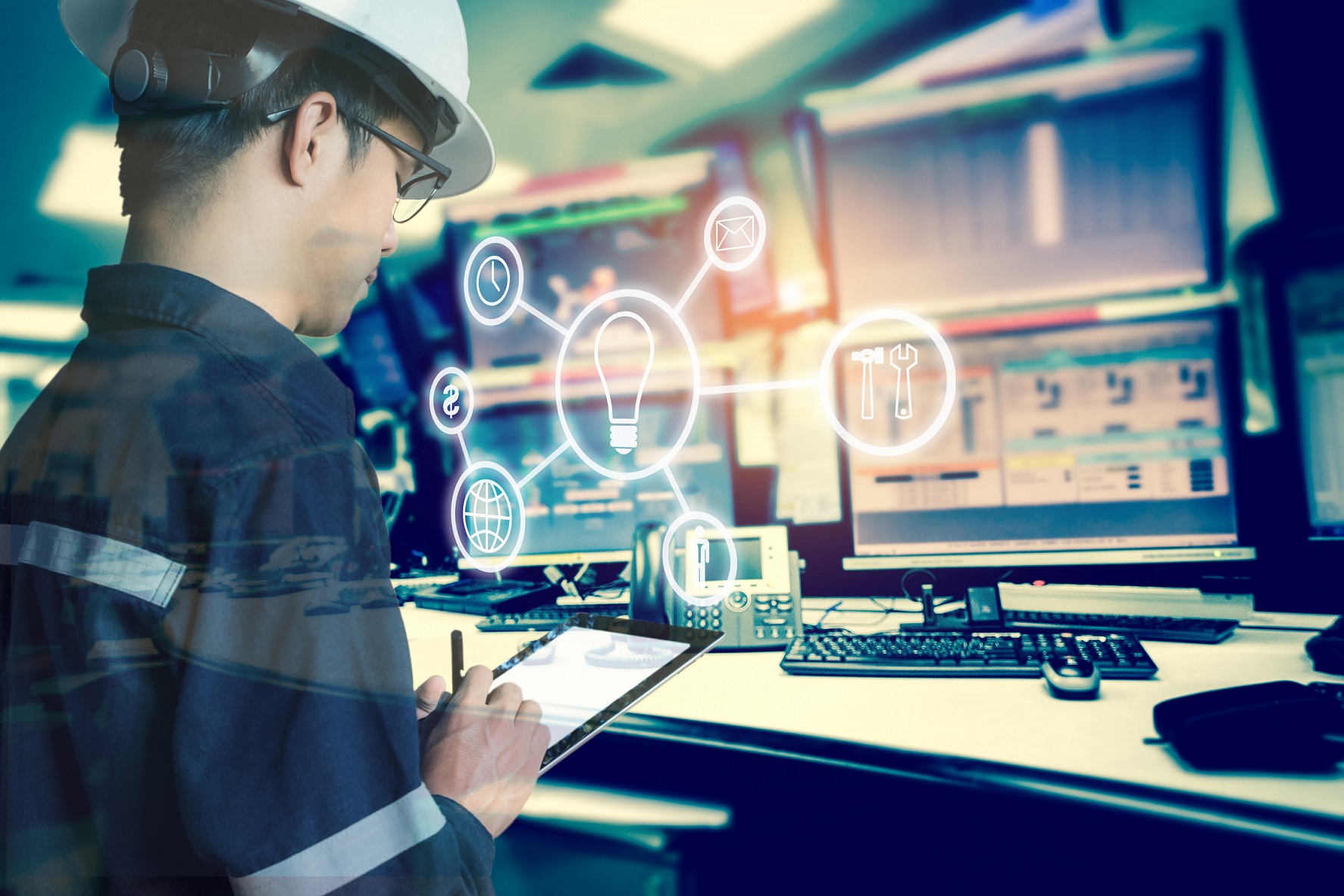
Buildings account for about 40 percent of total energy consumption, and nearly 40 percent of all carbon dioxide output nationwide–according to Alliance to Save Energy and EESI. To maintain energy efficiency levels, a growing number of municipalities are requiring some level of Leadership in Energy and Environmental Design (LEED) certification for new and renovated buildings that supplement a growing list of sustainability initiatives from states. LEED has grown to nearly 80,000 participating projects and over 32,500 certified commercial projects in 162 countries worldwide, proving a point that sustainability and efficiency improvement are strategic goals that are here to stay.
Systems are not new to buildings, nor is the term ‘smart building’—typically used to describe a building where the component subsystems form a cohesive unit, interacting with one another by means of a central control logic or automation. This philosophy brought to life through building management systems, and to an extent SCADA solutions, has fared well to add a layer of visibility and control, allowing operators to enhance building efficiency through a single location instead of managing and monitoring multiple tools at once. This has allowed information to be centrally managed from many pieces of equipment and subsystems. Yet these BMS-centric solutions have had their shortcomings. These often include, but are not limited to, significant complexity in design and implementation, capital expense, and limited options on flexibility to adapt outside of proprietary vendor technologies limiting the options on who and what can be integrated holistically into a smart building solution. Most importantly, these systems focus often on the ‘now’. They don’t fully rely on the possibilities of using the trove of data available from all the subsystems over time, to learn and adapt to conditions as they inevitably change.
For example, HVAC and lighting systems comprise more than half of the typical commercial buildings’ energy use. Smart buildings are growing in parallel with smart city infrastructure. In fact, one projection puts the global smart buildings market reach to $109.48 billion by 2026. These systems alone host a wealth of sensors and controls for proper code compliance, as well as occupant control and convenience. Each offer valuable insight into operation that may very well be useful beyond their core functions within these dedicated subsystems. A prime example is a lighting system motion sensor–typically used to turn on and off a lighting circuit, offers potential data that can be harnessed to enhance much more than just lighting efficiency. It could play a valuable role in determining whether an HVAC system should run in a space, have implications for security monitoring, or be used for room occupancy data for scheduling meeting room. A key aspect is the ability to scale the data collection and management from one location to portfolio of locations—harnessing critical insight on space utilization and impacting the overall usage trends in a space. All this insight can be obtained from a single sensor network, already placed in a building to meet code requirements. Each of these are analytics on the available data and offer different levels of efficiency for different stakeholders.
The question is how to do this. Already providing the answer for other verticals, IoT technology is also the main catalyst in smart building infrastructure.
What Does IoT Have To Do With Smart Buildings?
As previously mentioned, commercial properties’ sensory networks already exist, chock full of almost unlimited data. But each trade–from HVAC, BMS, to security, to lighting–maintains its own siloed data. The aggregated data rarely interact across various systems or trades. BMS does an exceptional job at cross system control, but often the thinking is purpose-driven. A lighting sensor is used in a lighting system, and that is the end of the thought train. In order to reduce redundancy, improve efficiency levels, and take full advantage of data intelligence, the data must be captured, organized, and have access to be shared.
The next logical step in smart buildings is not replacing anything but aggregating this data into useable form to provide a true single pane of glass approach to operation and enable analytics with a true and complete dataset of real-time and historic information to enable the full power of analytics.
IoT platforms enable this functionality on top of what is already in place, providing facility operators unparalleled intelligence not previously possible or accessible, while also allowing this same set of data to be used for a wider range of options by other stakeholders. Most importantly, there is little need to replace what is already running while allowing growth into new technologies as they arise, free of vendor lock-in using brownfield (defined as legacy building communications methods) or greenfield IoT communication technologies (typically IP based). With these communications networks in place smart building technologies and legacy BMS telemetry tie together from a multitude of systems into one clear and concise location. Once data is collected, it is organized and analyzed, offering facility operators full insight, visibility and intelligence into efficient building operations to help optimize:
- Management, monitoring and reporting from all energy consumers or generators across a portfolio of buildings.
- Utilization of all the facility assets for greater efficiency and preventative maintenance activities.
- Management of underutilized space and assets for increased savings and income.
- Tracking and triage of equipment and operations, to ensure all systems are up and running.
- Real-time visibility and alerts into malfunctioning systems’ failures for tracking and issuing work orders on failed systems or equipment across the distributed buildings’ footprint.
- Data sharing of sensing devices reducing redundancy of equipment and lowering capital expenses of duplication.
- Building occupants’ role in actively managing their space–from lighting, to reporting the need for repairs, to managing energy consumption.
- Access to consolidated data for 3rd party analytics micro-service tools.
It’s important to note that IoT platforms were born out of I.T. technology, not building technology. This affords a significant advantage as IoT platforms seamlessly operate across enterprises and locations without complications. IoT platforms are hardened for security and easily scale to thousands of locations using all standard I.T. provisioning.
Armed with such valuable and actionable analytics, facility operators can leverage the IoT intelligence for preventative maintenance, and continuous commissioning methodologies fostering O+M auditing and sustainability compliance. This also allows operators to optimize facility management across a portfolio of different shapes and sizes of buildings for full control and enhanced savings on OpEx and CapEx costs.
From commercial office buildings to multi-unit apartment facilities, IoT systems provide unmatched intelligence that fully empowers operators to preempt failures while maintaining full control and visibility across all connected systems–ensuring efficient living and workspace for tenants and occupants. And most importantly, all the systems–lighting, HVAC, security, entrance access and other connected systems–can be remotely managed and operated. Adding new facilities at scale is easily done with no hassles. This pandemic-proofing of critical facility operations adheres to social distancing rules, securing staff and employee safety.
What’s the ROI of IoT Energy Savings? A 30 percent reduction in building energy consumption, enabled by IoT sensors, equates to $65 billion annual savings to the overall U.S. economy.
IoT Platforms are the Pulse of Facilities
Consider a multi-family high-rise condominium building with multiple mechanical systems traditionally operated and managed by two full-time engineering staff–with no real-time mechanical insight across the extensive footprint of the condo facility. Systems’ monitoring meant walking around and checking various areas and systems of the building in person. So, it was no surprise when the boiler malfunctioned, and tenants felt temperatures dropping and notified the building engineers who were not aware that the boiler had stopped working.
With the installation of a new, more expensive boiler, the engineering staff integrated an IoT platform. Easily installed, the IoT platform hardware and software provided the building’s operations staff valuable insight into monitoring and control of multiple HVAC systems, lighting, and domestic cold water booster pumps. Critical operations insights not previously available were now valuable operations intelligence–they had the building pulse at their disposal.
Alarms alerted operators of critical events at the building, keeping them informed, in real-time, of equipment or systems failures before they turned into costly repair or equipment replacement. Expedited data aggregation across an entire portfolio of properties, regardless of the existing systems, allowed for critical data to be collected, organized, and analyzed into actionable tasks. The engineering staff were now able to receive real-time alerts to preempt failures and accommodate rapid repairs. It also allowed them to find and efficiently use underutilized space, manage energy waste, and reduce the overall operations costs. We can easily expand this theory to multiple buildings in a portfolio without expanding human capital.
Smart building technology is here to stay and growing. An IoT platform can allow all the systems in a building or portfolio of facilities to benefit from inter-operating with one another. And whether a facility operator’s goal is resident comfort, cost control, energy efficiency, reduced redundancy, disaster or pandemic proofing, an IoT platform remains one of the simplest, least expensive ways to gather, analyze and use all the collected data for optimized improvements. As buildings operators prepare for the post-COVID return of employees and staff, it’s also essential to ensure epidemic and post-epidemic conditions are in place with a systems analysis for buildings readiness with resources provided by ASHRAE.
 Michael C. Skurla is the Chief Technology Officer of Radix IoT– offering limitless monitoring and management rooted in intelligence–and has over two decades’ experience in control automation and IoT product design with Fortune 500 companies. He is a contributing member of ASHB, ASHRAE, IES Education, and USGBC and a frequent lecturer on the evolving use of analytics and emerging IT technologies to foster efficiency within commercial facility design.
Michael C. Skurla is the Chief Technology Officer of Radix IoT– offering limitless monitoring and management rooted in intelligence–and has over two decades’ experience in control automation and IoT product design with Fortune 500 companies. He is a contributing member of ASHB, ASHRAE, IES Education, and USGBC and a frequent lecturer on the evolving use of analytics and emerging IT technologies to foster efficiency within commercial facility design.

